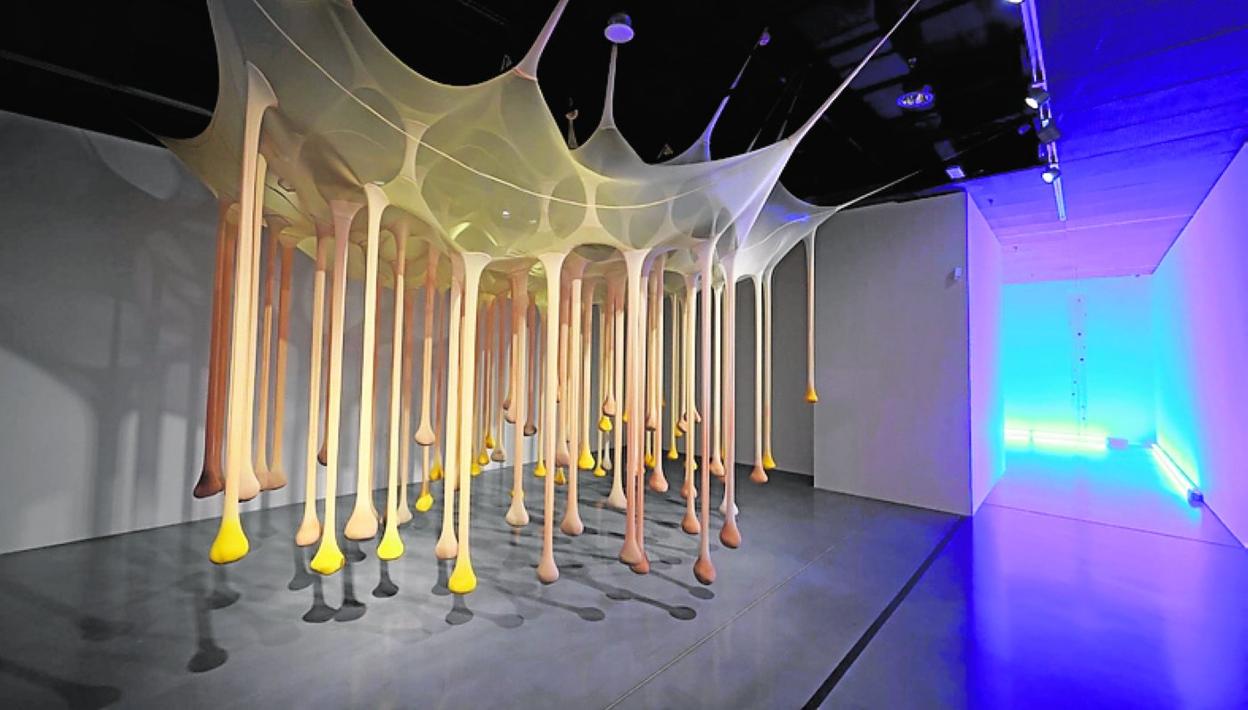About time
REVIEW ·
A post-lockdown inspired show invites us to "escape the clock"GEORGINA OLIVER
Friday, 3 June 2022, 11:10
Fortunately, Malaga-based museum-goers have all the time in the world (until 15 October 2023) to see and re-see the brand-new semi-permanent exhibition unveiled at the Pompidou Centre this spring. One visit is not enough.
Tourists popping into "El Cubo" will have to pick and choose. Gone are the days of fast-track marathon-viewing. Better to spend "quality time" with a select few works in each section rather than racing through the entire "expo", reading one explanatory notice after another - my idea of highbrow hell!
Entitled Un Tiempo Propio (A Time of One's Own: Escaping the Clock, in English), the show embarks us on a visual arts adventure. Conceived as a "voyage" or cultural escapade featuring six "ports of call" all time-related (Leisure Time, Holiday Time, Time of Introspection, In Between Time, Inner Time, Time of Confrontation), it explores a timeless topic, placing it in a timely post-lockdown perspective.
Moimas touch
Much more than a mere curatorial concept, this thematic overview functions like a contemplative time-space continuum, and there's a reason for that: an architect is at the helm. A professor at the École Nationale Supérieure d'Architecture de Paris La Villette and curator of the Musée Nationale d'Art Moderne-Centre de Création Industrielle at the Centre Pompidou in Paris, Valentina Moimas prospected the museum's collection of modern and contemporary artworks (the largest in Europe) in search of inspiration when planning the project, and created a visitor trail built upon the resulting treasure trove (114 items, by 90 prominent artists).
Marketing buffs would describe this seemingly "seamless" stream of consciousness-like approach as "experience-enhancing", but Moimas is on another plane. Her Pompidou display is a subtle combination of scenography (intertwining intimate hanging spaces and spectacular multimedia installations) and artistic musings (suggesting an open-ended narrative, with a philosophical twist).
"Why talk about time and how to talk about time, especially about the time we have for ourselves?" she wonders in the introduction to the trilingual catalogue. "Because in recent months, with the pandemic, each of us has been confronted with new situations for which we were not prepared. Our lives have been turned upside down (...). In other words, something that was previously well regulated, like a clock (or by clocks), has gone missing... In this loose, wispy fabric of distended time, seconds, minutes and hours acquired a special relativity."
Ambassadorial role
In attendance at the inauguration, Brigitte Leal, Head of Collections at the Pompidou Centre in Paris, pointed out that the Centre's Malaga branch would play a key role in representing the museum on the international art scene, when "Beaubourg" closes for repairs (for four years, from 2023).
Curiously enough, while the previous semi-permanent exhibition, which re-opened after the 2020 lockdown, focused on A Century of Spanish Art - From Miró to Barceló, the current selection is a showcase for other mondo avant-gardes. This time 'round, unless I've missed somebody... only Pablo Picasso and Joan Miró get a "look-in".
Missing Dalí?
I know what you're thinking... "And speaking of Spaniards, and Catalans... What about Salvador Dalí and his iconic soft watches? Shouldn't they be in an exhibition about time going pear-shaped?" But... ha ha, "No Way José"! The Persistence of Memory has been "six hours back", since the early 1930s - in New York City, in the collection of the Museum of Modern Art (MoMa)... to be precise.
